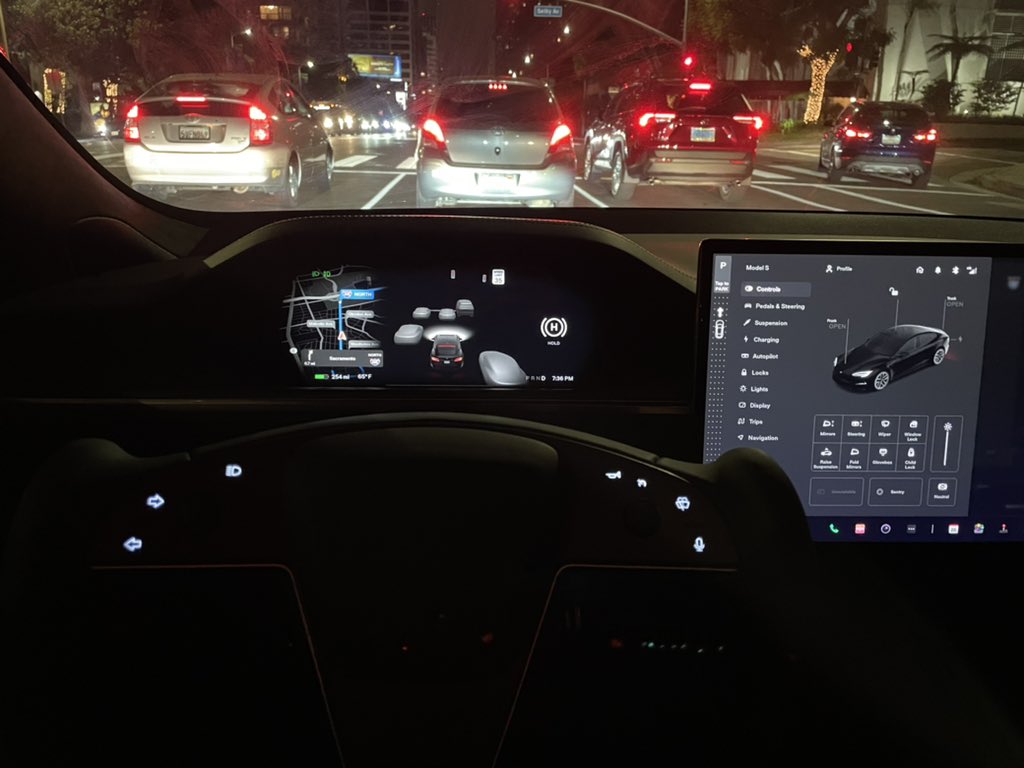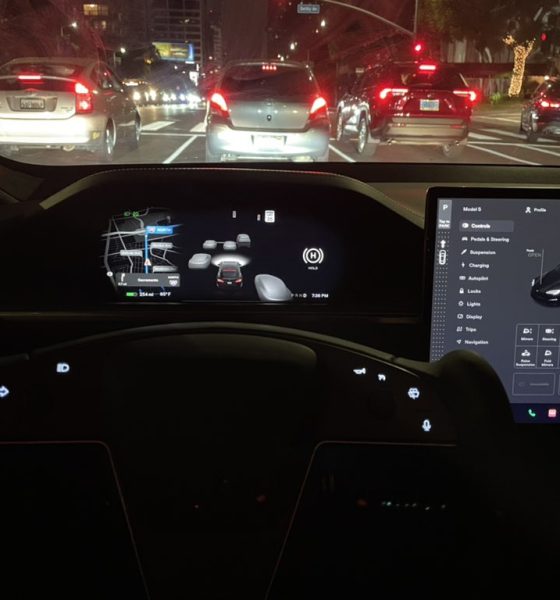A recent report has revealed that Tesla drivers are feeling the brunt of anti-EV sentiments. The Tesla drivers observed that they tend to be heckled and dangerously cut off in traffic, among others.
Obscene Gestures and Road Rage
In a statement to The Guardian, Paul Albertson, who lives in Beaverton, Oregon, told of some disturbing experiences on the road. According to Albertson, rude drivers tend to roll coal on him or swerve into his lane, something that simply does not happen when he is driving his other cars, like a 2014 Chevrolet Traverse. Most often, the drivers behind these acts are driving large pickup trucks, Albertson said. “Random rude drivers will swerve in my lane to yell at me or turn on a heavy diesel exhaust that blows black smoke,” he said.
Laura Kennedy, who also lives in Pennsylvania, has had similar experiences. “It’s almost always a guy in a pickup truck (who does something). I don’t think I’ve ever been flipped off in my life as much as I have in the past year or so,” Kennedy said. Theresa Ramsdell, who has owned two Teslas since 2016, noted that she’s had some scary experiences on the road as well.
“People cut us off on the freeway, give us the finger, yell at me through the windows. A couple of people have not exactly tried to push me off the road, but drive real close to the side of my car and smile. It’s happened to me twice going at 65 mph, and it’s scary,” Ramsdell said.
Even in California, where Teslas are very common, acts of road rage are reportedly still notable. A 22-year old man told The Guardian that while his Tesla has been one of the best things he’s purchased, he does experience road rage a lot.
“I noticed the road rage within the first week I got it. I’ll just be driving the same speed I had in my old Ford Fusion, but they’ll cut in front of me and drive really slow or prevent me from switching lanes. On city streets, I’ll go the speed limit, and cars leaving parking lots will decide to cut in, making me stomp on the brakes. That’s happened eight times this month,” the Tesla driver said.
Not a New Trend
The experiences of Tesla owners outlined by The Guardian have been happening for some time. Earlier this year, Axios Des Moines reached out to members of the Iowa Tesla Owners Club on social media. The publication received a lot of responses that suggest that Tesla drivers are experiencing a notable degree of aggravation from fellow drivers on the road.
Suzie Stewart of Des Moines shared that during a drive with her son last month, another driver made obscene gestures as they passed. The other driver then tailgated their Tesla without provocation. According to Stewart, she fears for her teenage son’s safety because he drives a Tesla, an ironic statement as Tesla’s electric vehicles consistently rank among the safest cars on the road.
Des Moines-based Uber driver Kyle Volz’s experiences are similar, though he noted that the anti-Tesla harassment becomes especially noticeable during weekends. Volz even noted that he believes one driver tried to run him off the road. Spencer Hall of Norwalk, Iowa, on the other hand, stated that drivers either try to intimidate him or challenge him to races. This happens multiple times a week.
Anti-EV, Anti-Musk
Electric Vehicle Association spokesperson and Tesla owner Marc Geller noted that anti-Tesla sentiments may be changing, and part of it may be due to CEO Elon Musk’s political inclinations. Geller noted that while anti-EV road rage traditionally came from far-right conservatives, Musk’s recent support for right-wing politicians may be causing some knee-jerk reactions from the far left as well.
“There’s an irony here in that Teslas have long been a hate magnet for various reasons. They were the subject of road rage because they represented the environment and were perceived as the vehicular embodiment of that culture war. But now here we are, and some folks on the left are having a knee-jerk reaction because Elon Musk has taken this ominous turn to the political right, so now they’re throwing the same bricks,” Geller said.
The Teslarati team would appreciate hearing from you. If you have any tips, contact me at maria@teslarati.com or via Twitter @Writer_01001101.

Elon Musk
Elon Musk confirms xAI’s purchase of five 380 MW natural gas turbines
The deal, which was confirmed by Musk on X, highlights xAI’s effort to aggressively scale its operations.

xAI, Elon Musk’s artificial intelligence startup, has purchased five additional 380 MW natural gas turbines from South Korea’s Doosan Enerbility to power its growing supercomputer clusters.
The deal, which was confirmed by Musk on X, highlights xAI’s effort to aggressively scale its operations.
xAI’s turbine deal details
News of xAI’s new turbines was shared on social media platform X, with user @SemiAnalysis_ stating that the turbines were produced by South Korea’s Doosan Enerbility. As noted in an Asian Business Daily report, Doosan Enerbility announced last October that it signed a contract to supply two 380 MW gas turbines for a major U.S. tech company. Doosan later noted in December that it secured an order for three more 380 MW gas turbines.
As per the X user, the gas turbines would power an additional 600,000+ GB200 NVL72 equivalent size cluster. This should make xAI’s facilities among the largest in the world. In a reply, Elon Musk confirmed that xAI did purchase the turbines. “True,” Musk wrote in a post on X.
xAI’s ambitions
Recent reports have indicated that xAI closed an upsized $20 billion Series E funding round, exceeding the initial $15 billion target to fuel rapid infrastructure scaling and AI product development. The funding, as per the AI startup, “will accelerate our world-leading infrastructure buildout, enable the rapid development and deployment of transformative AI products.”
The company also teased the rollout of its upcoming frontier AI model. “Looking ahead, Grok 5 is currently in training, and we are focused on launching innovative new consumer and enterprise products that harness the power of Grok, Colossus, and 𝕏 to transform how we live, work, and play,” xAI wrote in a post on its website.
Elon Musk
Elon Musk’s xAI closes upsized $20B Series E funding round
xAI announced the investment round in a post on its official website.

xAI has closed an upsized $20 billion Series E funding round, exceeding the initial $15 billion target to fuel rapid infrastructure scaling and AI product development.
xAI announced the investment round in a post on its official website.
A $20 billion Series E round
As noted by the artificial intelligence startup in its post, the Series E funding round attracted a diverse group of investors, including Valor Equity Partners, Stepstone Group, Fidelity Management & Research Company, Qatar Investment Authority, MGX, and Baron Capital Group, among others.
Strategic partners NVIDIA and Cisco Investments also continued support for building the world’s largest GPU clusters.
As xAI stated, “This financing will accelerate our world-leading infrastructure buildout, enable the rapid development and deployment of transformative AI products reaching billions of users, and fuel groundbreaking research advancing xAI’s core mission: Understanding the Universe.”
xAI’s core mission
Th Series E funding builds on xAI’s previous rounds, powering Grok advancements and massive compute expansions like the Memphis supercluster. The upsized demand reflects growing recognition of xAI’s potential in frontier AI.
xAI also highlighted several of its breakthroughs in 2025, from the buildout of Colossus I and II, which ended with over 1 million H100 GPU equivalents, and the rollout of the Grok 4 Series, Grok Voice, and Grok Imagine, among others. The company also confirmed that work is already underway to train the flagship large language model’s next iteration, Grok 5.
“Looking ahead, Grok 5 is currently in training, and we are focused on launching innovative new consumer and enterprise products that harness the power of Grok, Colossus, and 𝕏 to transform how we live, work, and play,” xAI wrote.
Investor's Corner
Tesla gets price target bump, citing growing lead in self-driving

Tesla (NASDAQ: TSLA) stock received a price target update from Pierre Ferragu of Wall Street firm New Street Research, citing the company’s growing lead in self-driving and autonomy.
On Tuesday, Ferragu bumped his price target from $520 to $600, stating that the consensus from the Consumer Electronics Show in Las Vegas was that Tesla’s lead in autonomy has been sustained, is growing, and sits at a multiple-year lead over its competitors.
CES 2026 validates Tesla’s FSD strategy, but there’s a big lag for rivals: analyst
“The signal from Vegas is loud and clear,” the analyst writes. “The industry isn’t catching up to Tesla; it is actively validating Tesla’s strategy…just with a 12-year lag.”
The note shows that the company’s prowess in vehicle autonomy is being solidified by lagging competitors that claim to have the best method. The only problem is that Tesla’s Vision-based approach, which it adopted back in 2022 with the Model 3 and Model Y initially, has been proven to be more effective than competitors’ approach, which utilizes other technology, such as LiDAR and sensors.
Currently, Tesla shares are sitting at around $433, as the company’s stock price closed at $432.96 on Tuesday afternoon.
Ferragu’s consensus on Tesla shares echoes that of other Wall Street analysts who are bullish on the company’s stock and position within the AI, autonomy, and robotics sector.
Dan Ives of Wedbush wrote in a note in mid-December that he anticipates Tesla having a massive 2026, and could reach a $3 trillion valuation this year, especially with the “AI chapter” taking hold of the narrative at the company.
Ives also said that the big step in the right direction for Tesla will be initiating production of the Cybercab, as well as expanding on the Robotaxi program through the next 12 months:
“…as full-scale volume production begins with the autonomous and robotics roadmap…The company has started to test the all-important Cybercab in Austin over the past few weeks, which is an incremental step towards launching in 2026 with important volume production of Cybercabs starting in April/May, which remains the golden goose in unlocking TSLA’s AI valuation.”
Tesla analyst breaks down delivery report: ‘A step in the right direction’
Tesla has transitioned from an automaker to a full-fledged AI company, and its Robotaxi and Cybercab programs, fueled by the Full Self-Driving suite, are leading the charge moving forward. In 2026, there are major goals the company has outlined. The first is removing Safety Drivers from vehicles in Austin, Texas, one of the areas where it operates a ride-hailing service within the U.S.
Ultimately, Tesla will aim to launch a Level 5 autonomy suite to the public in the coming years.










